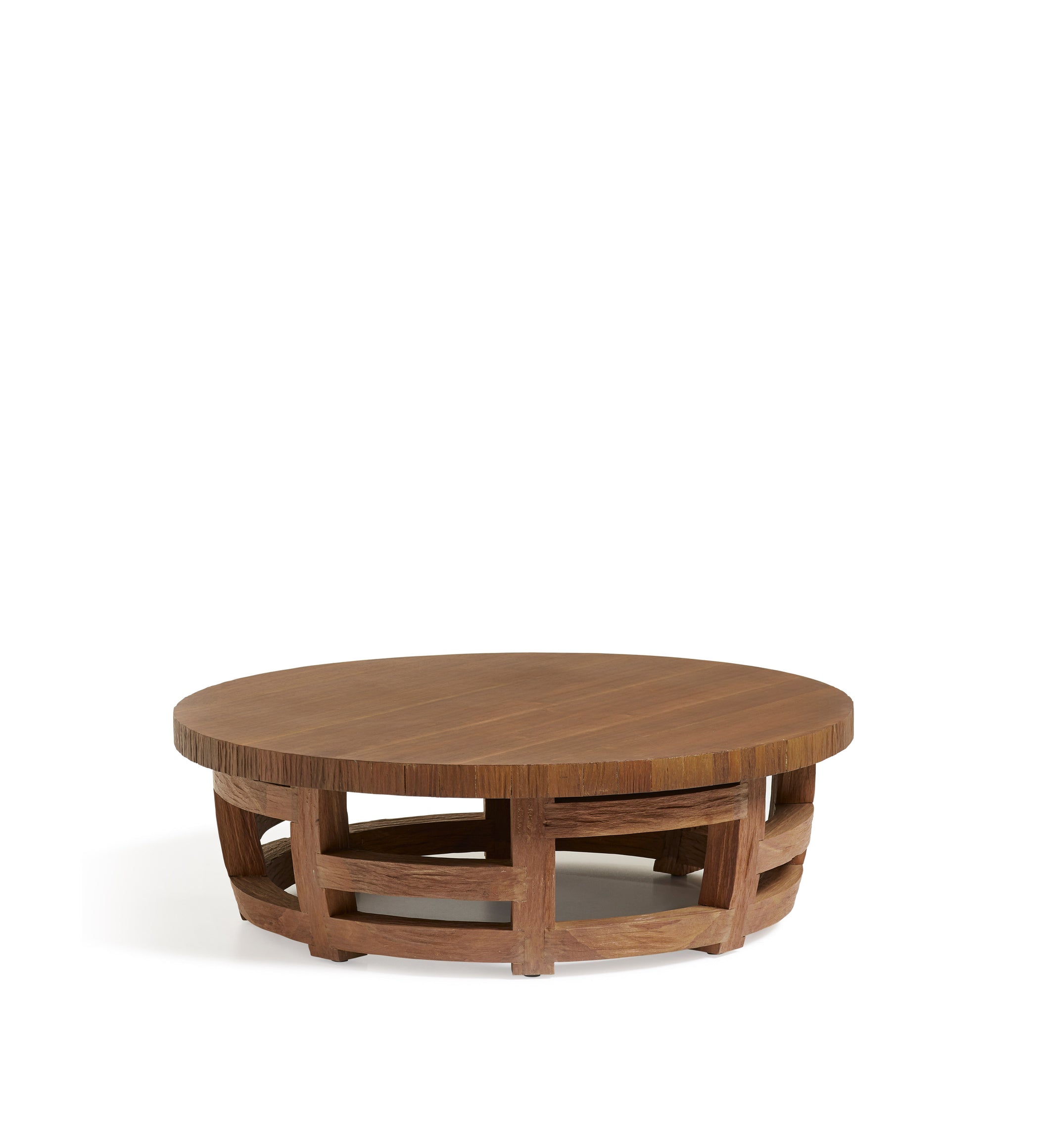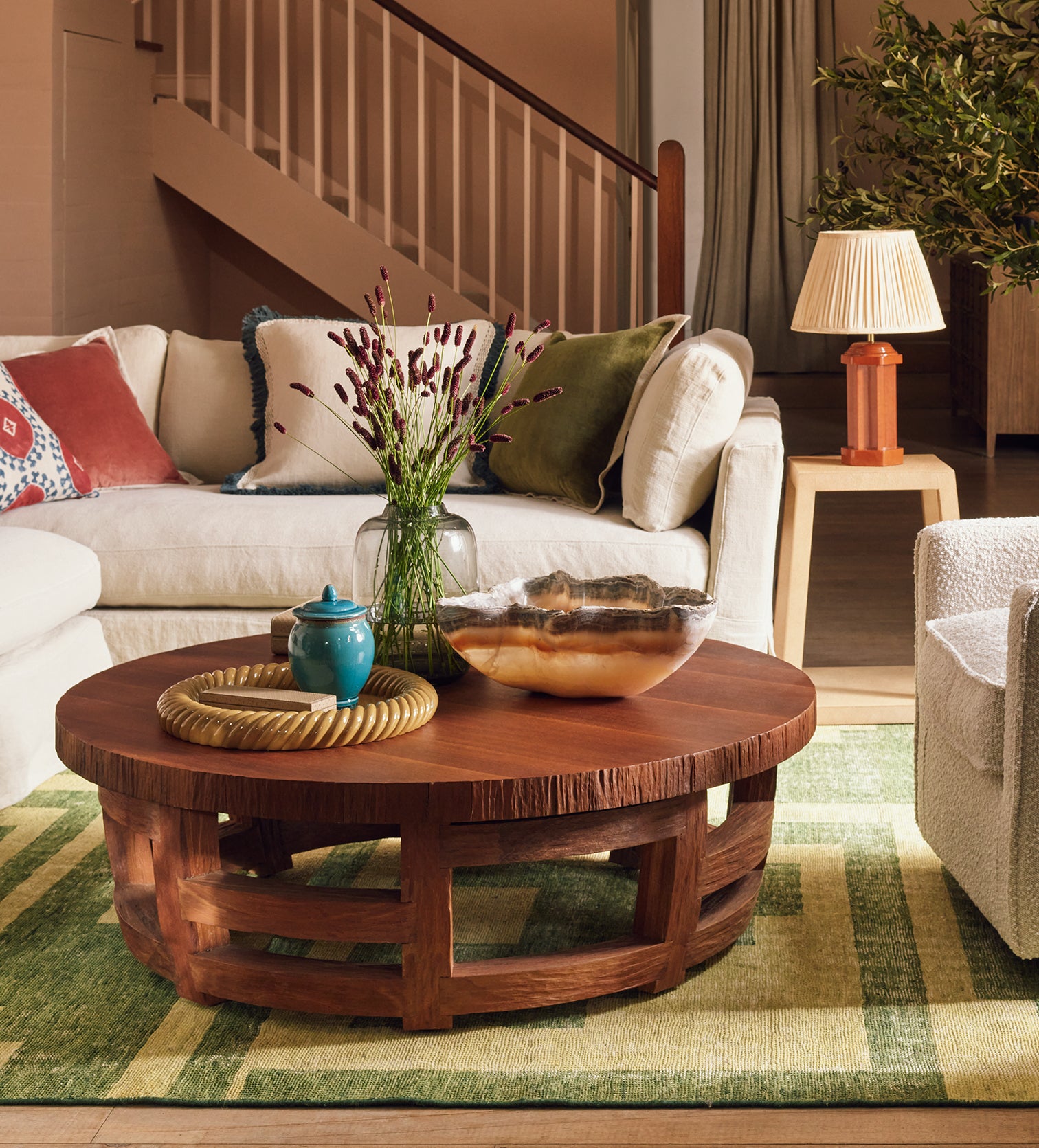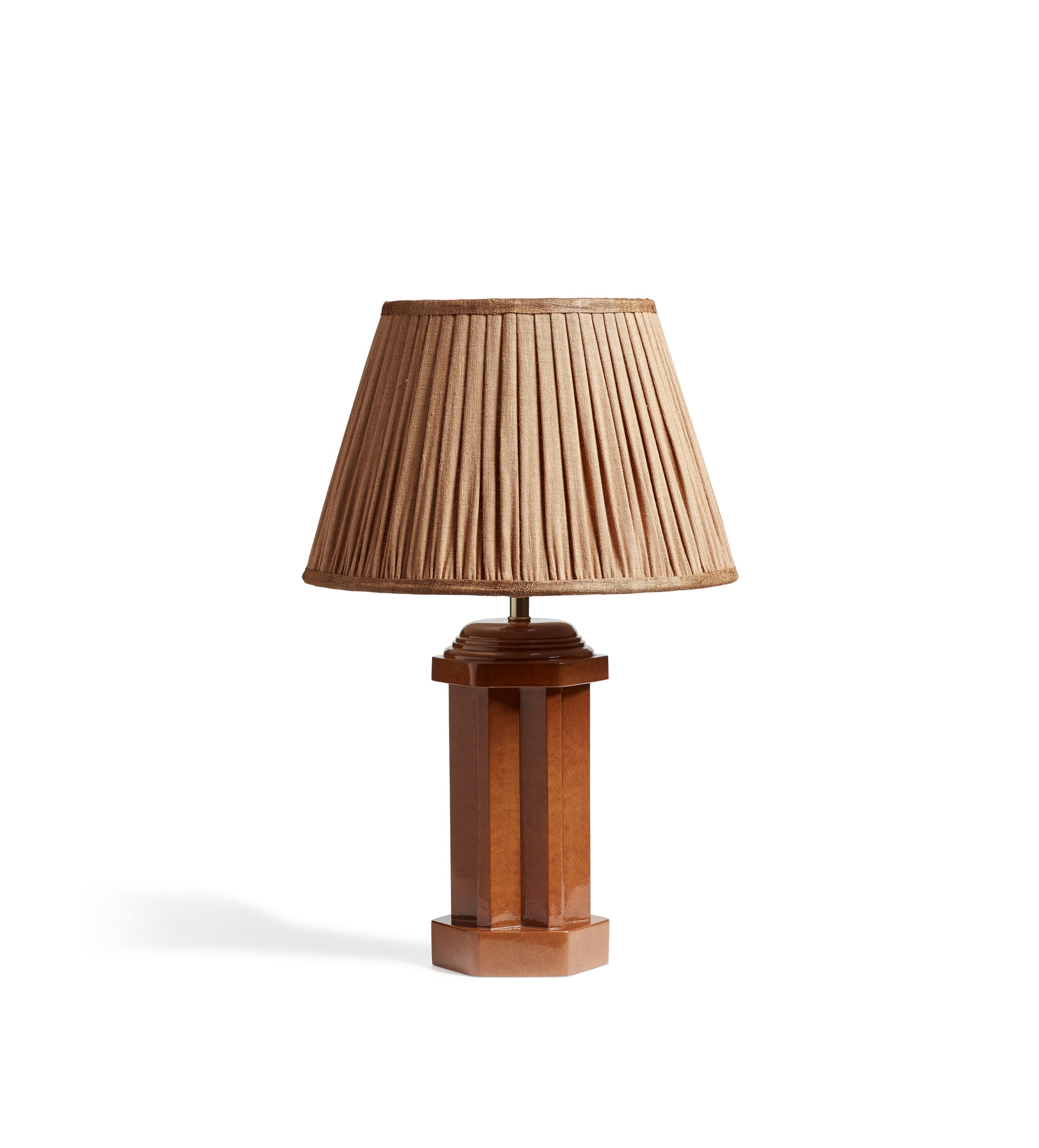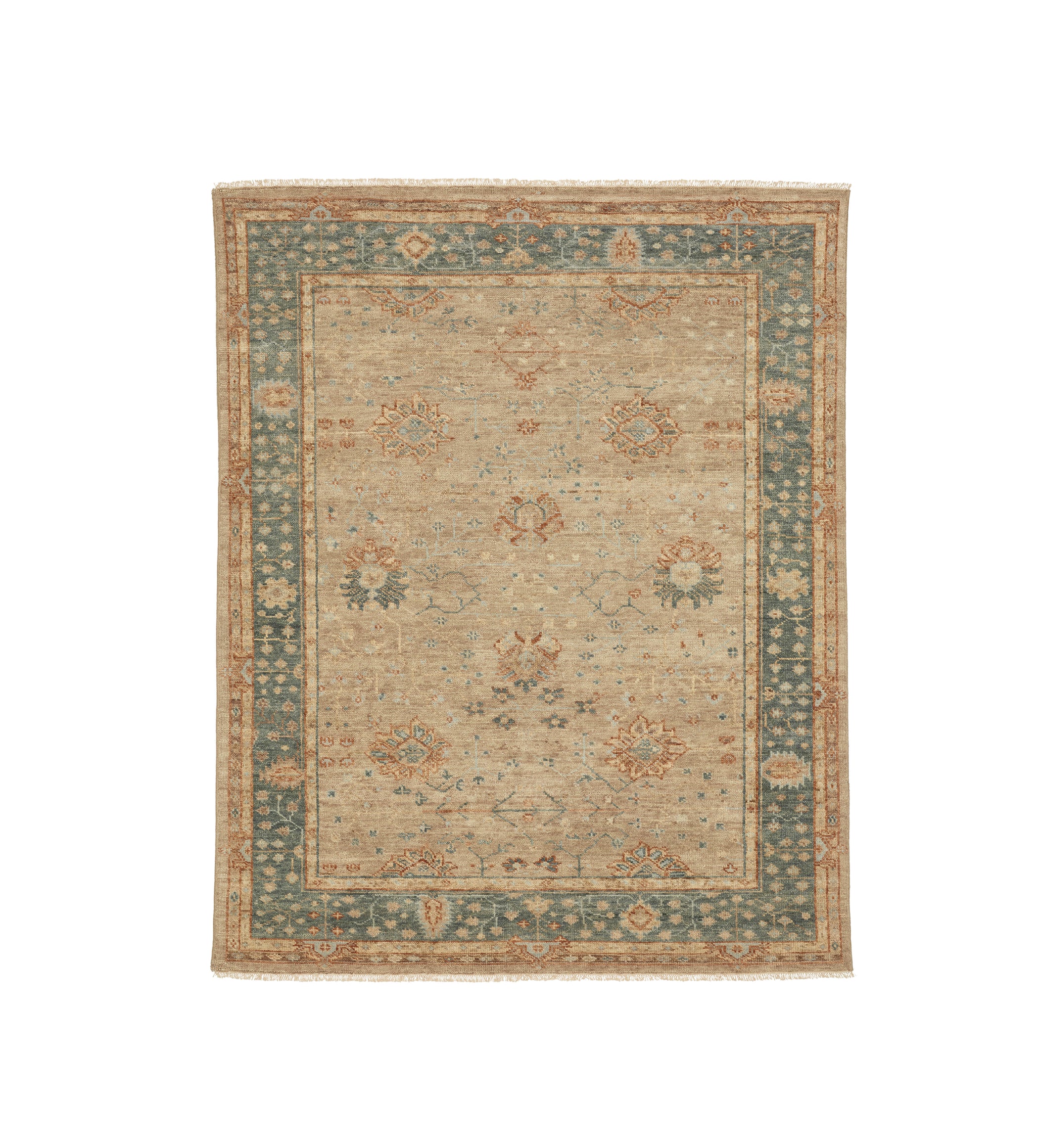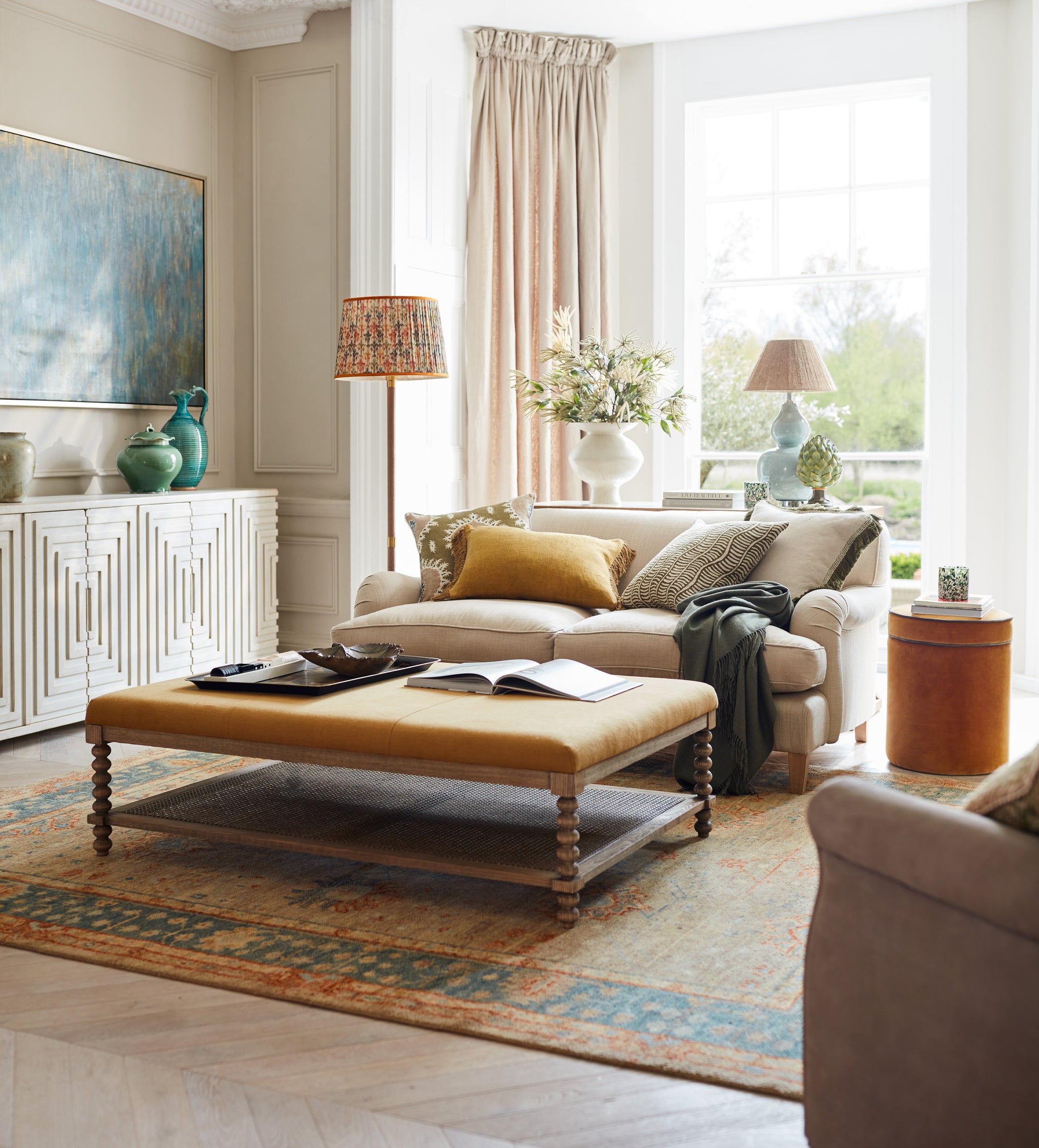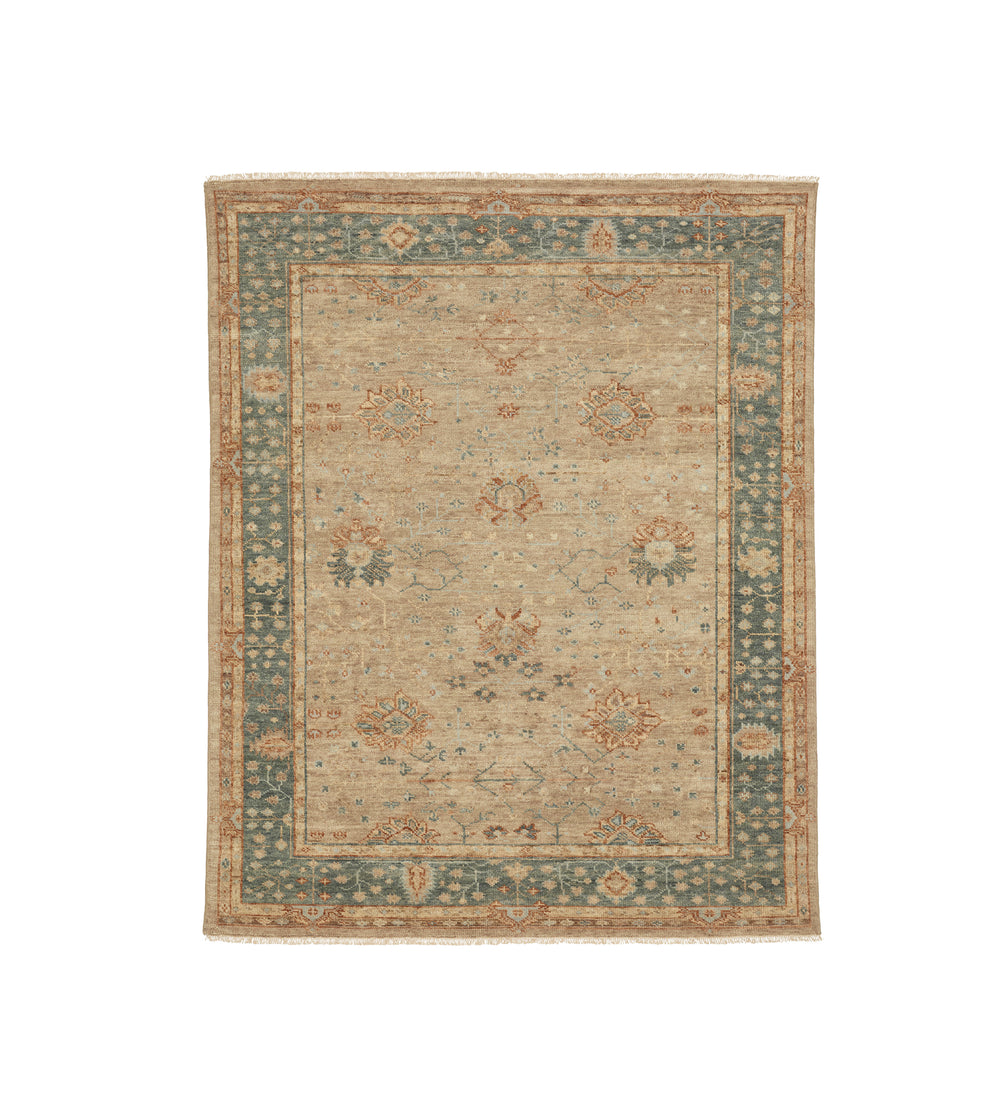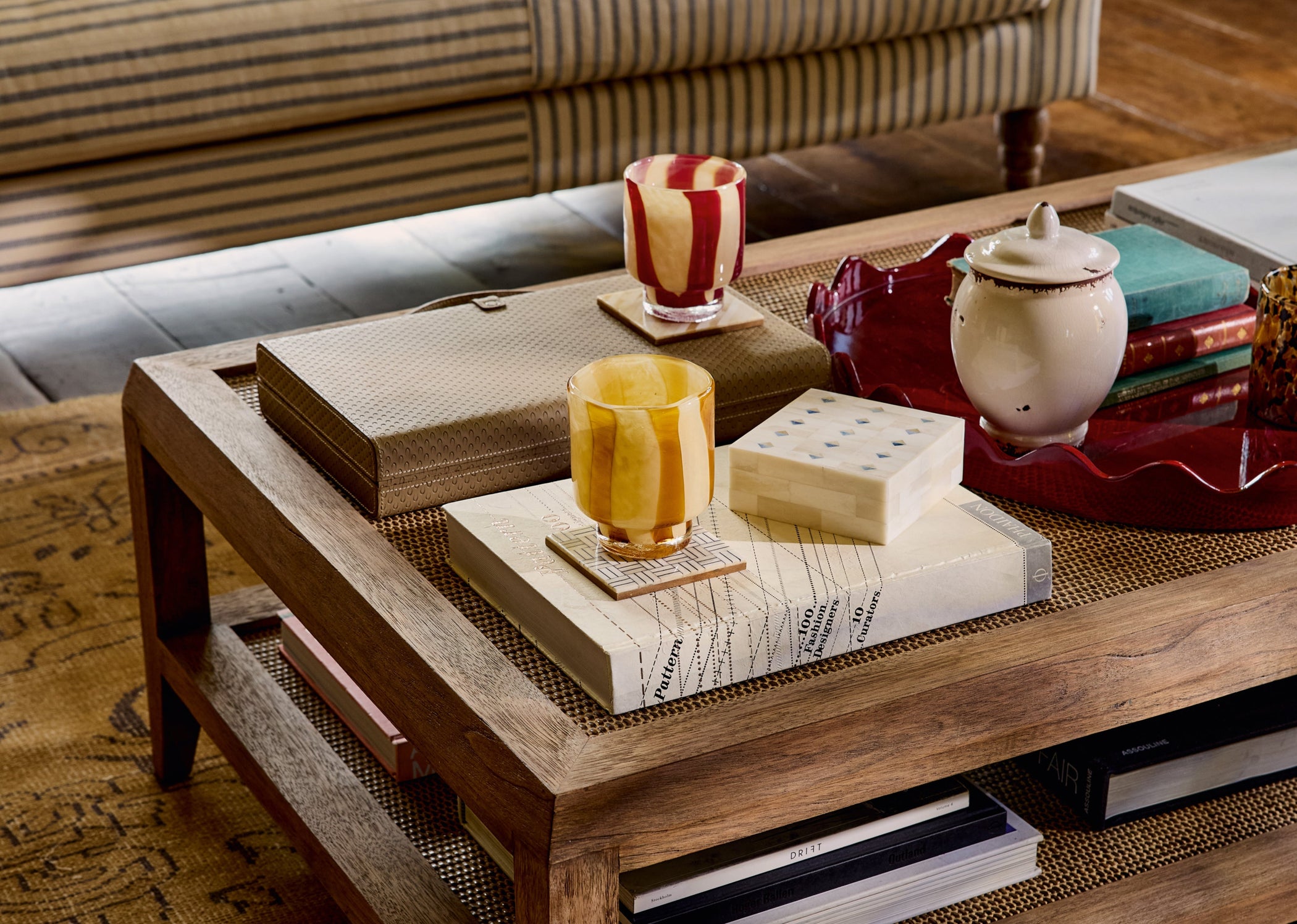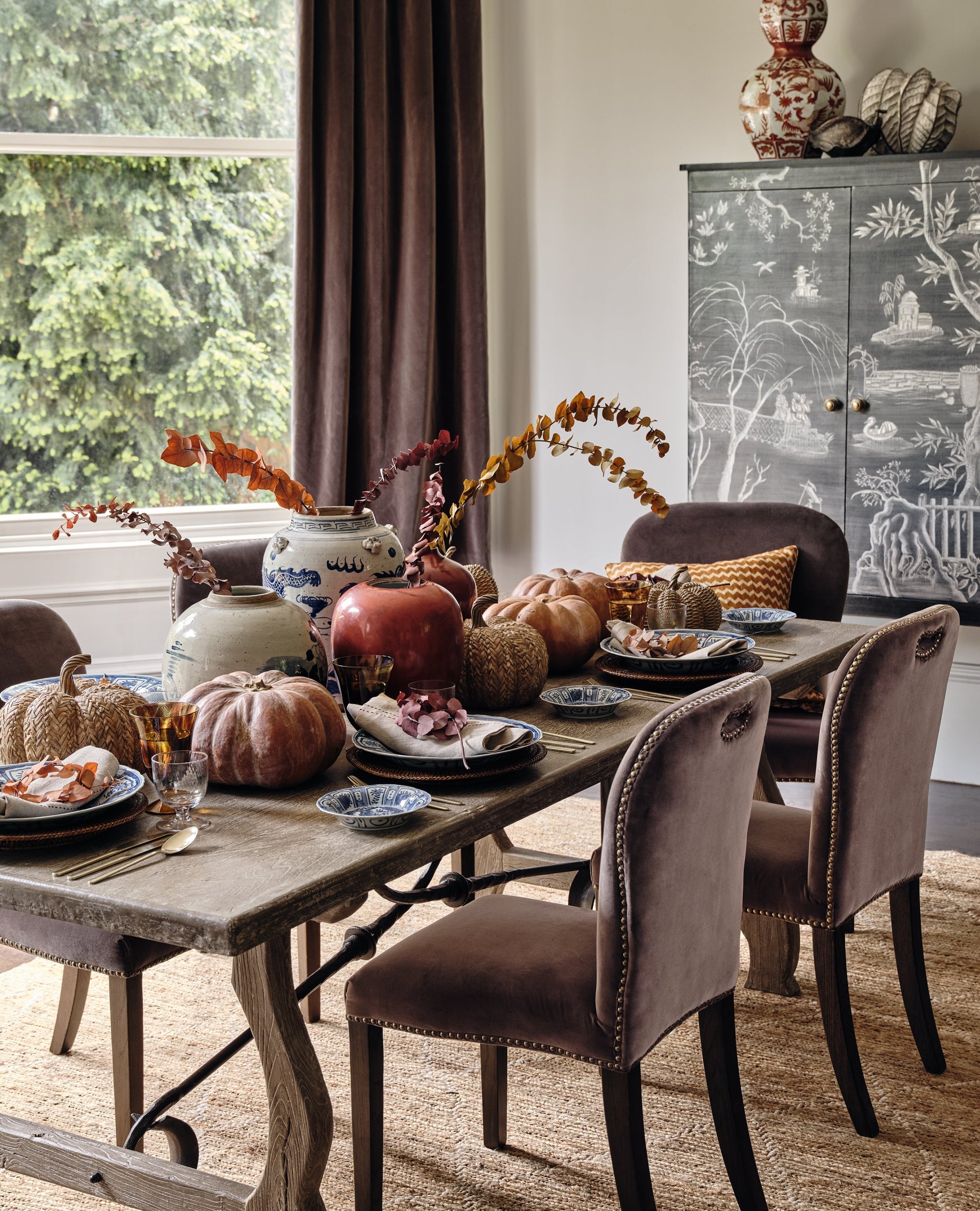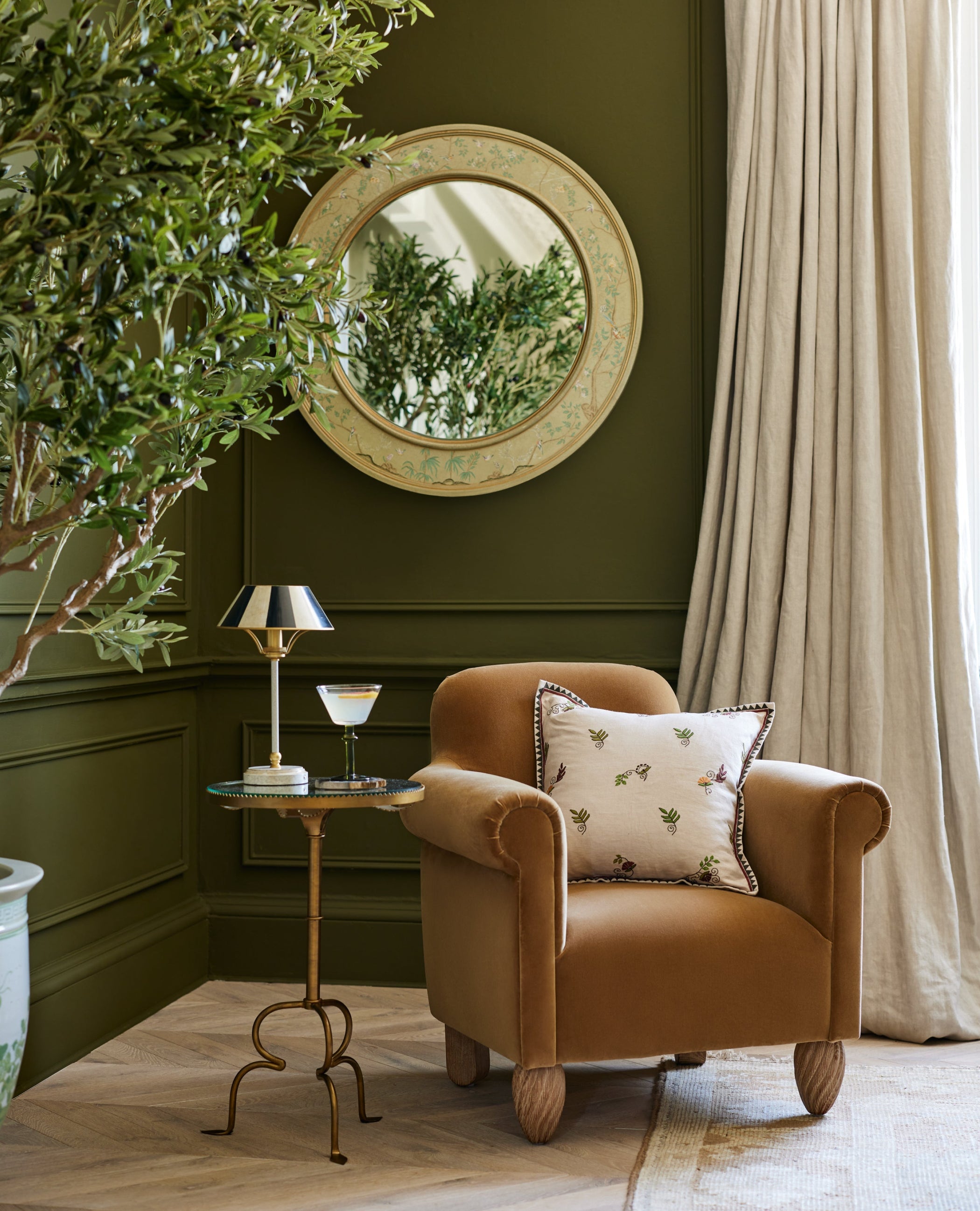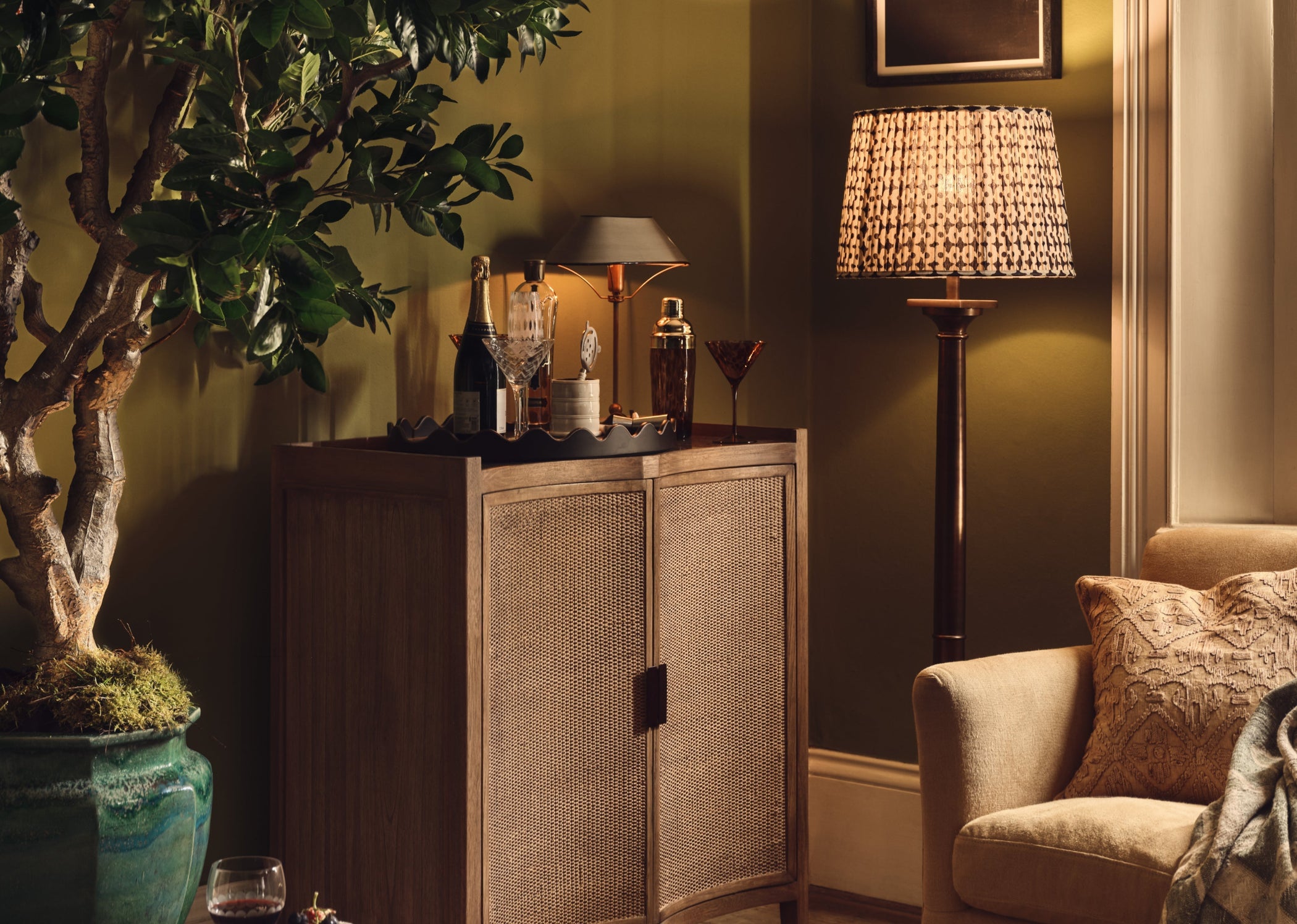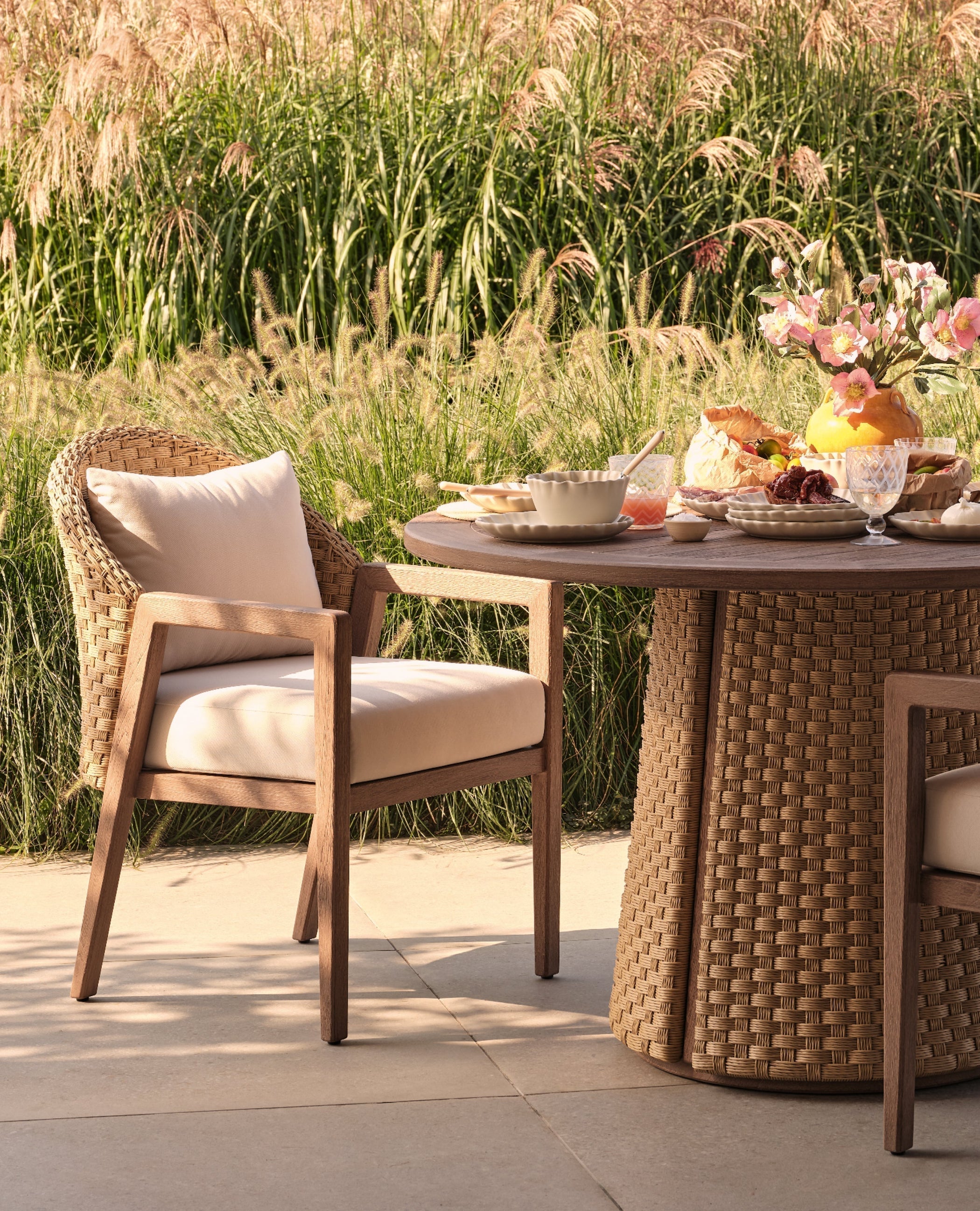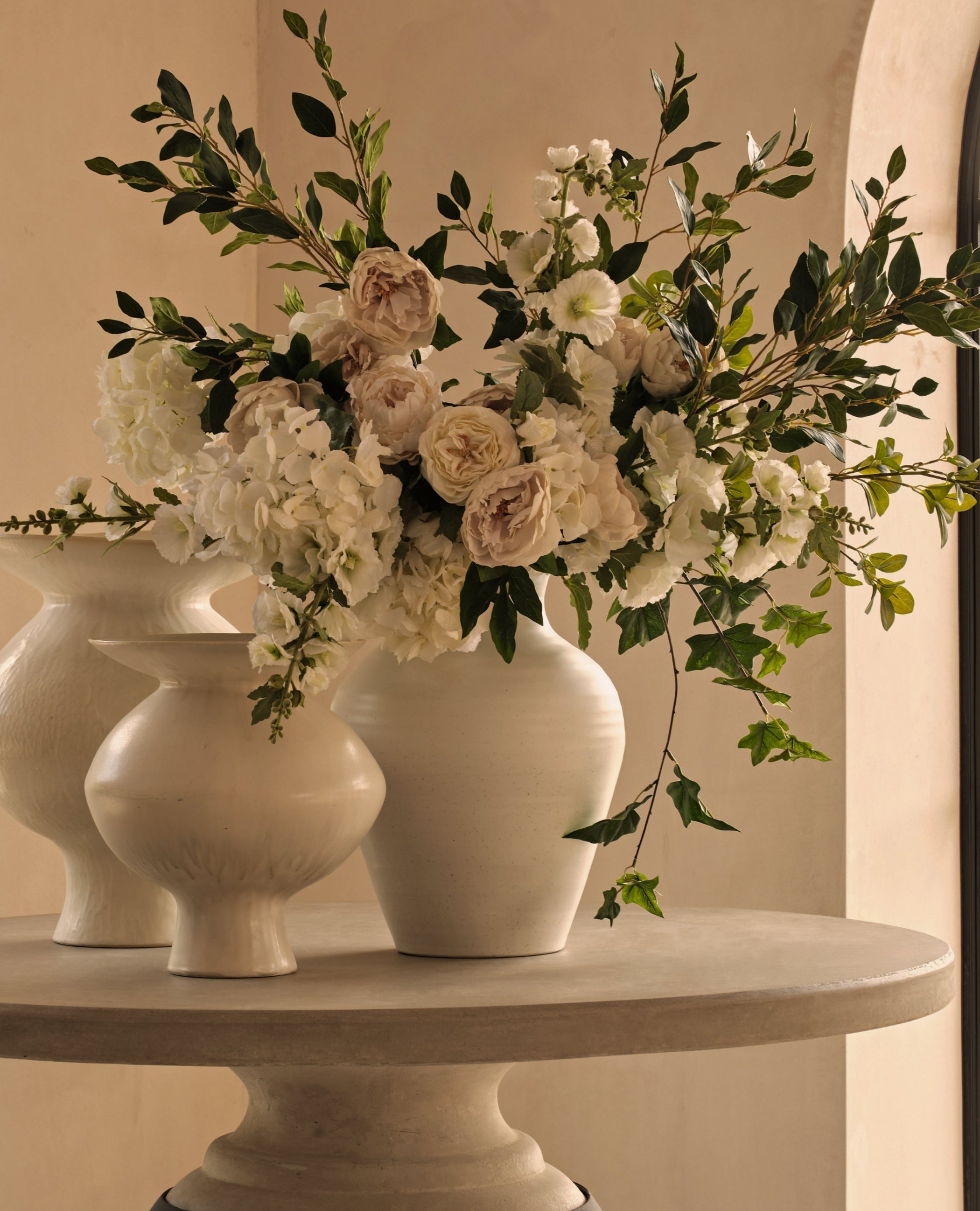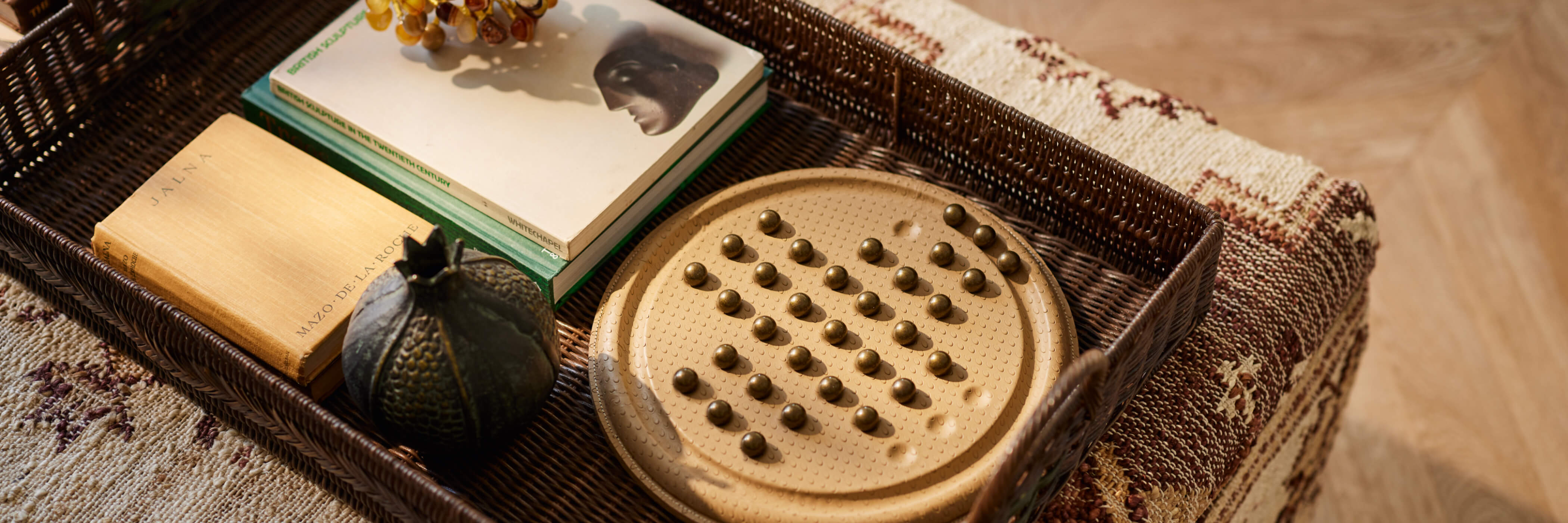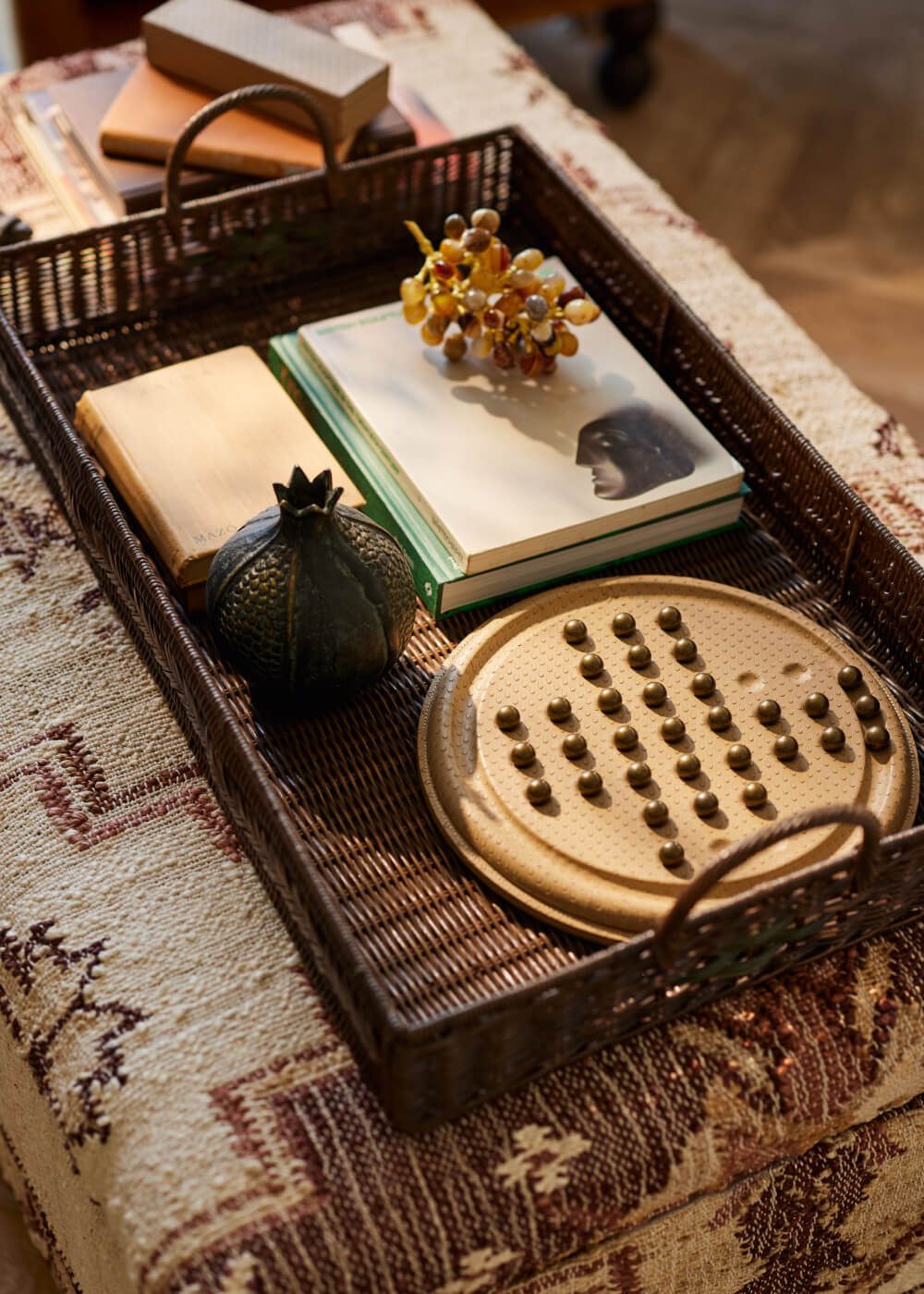Step 5: Choosing a rug colour
Once you’ve narrowed down the size, shape and pile of rug you want, it’s time for the fun part: choosing your style and pattern. If your home is already furnished, your choice of rug may be limited by pieces you already own. If that’s the case, look for a design with tones that complement and enhance your existing palette. If you’ve used pattern elsewhere in your home, you may want to look for single-colour or colour-block rugs that will help balance out the space and avoid an overly complex finish.
Similarly, simpler interior design schemes give you scope to really have fun with print and pattern, so don’t be afraid to go bold. Much like cushions, colourful rugs provide an opportunity to introduce vibrant pops of print and colour in an understated manner. Their position on the floor, plus the fact that they are often hidden by furniture, makes them a great way to introduce a little dash of daring design. That said, a print needn’t be loud – seek a pattern in muted hues to add interest to a minimalist interior.
If you’ve yet to start decorating, a rug is the perfect place to begin. Above all, think about how you want the rest of the room to look and feel, and try to find a design that emulates this. Once you’ve settled on your dream rug, use it as a springboard for the rest of the space, picking out similar shades to create synergy across the room.


































